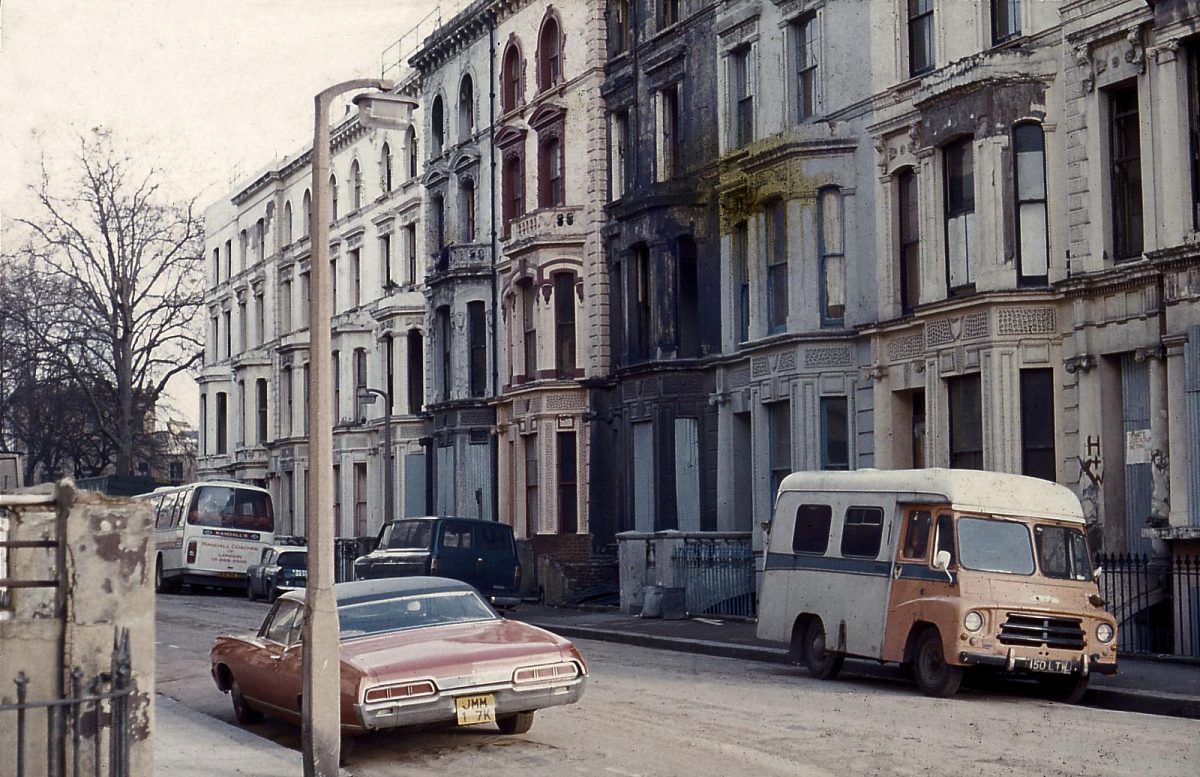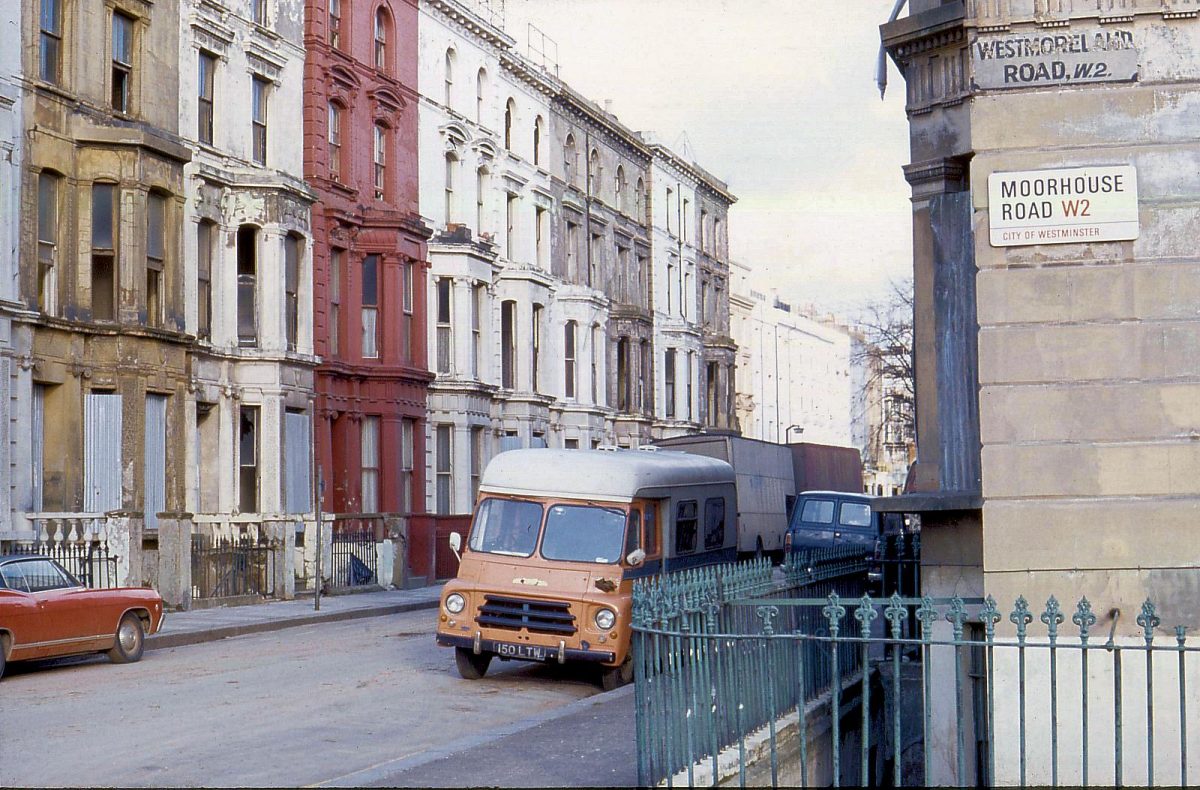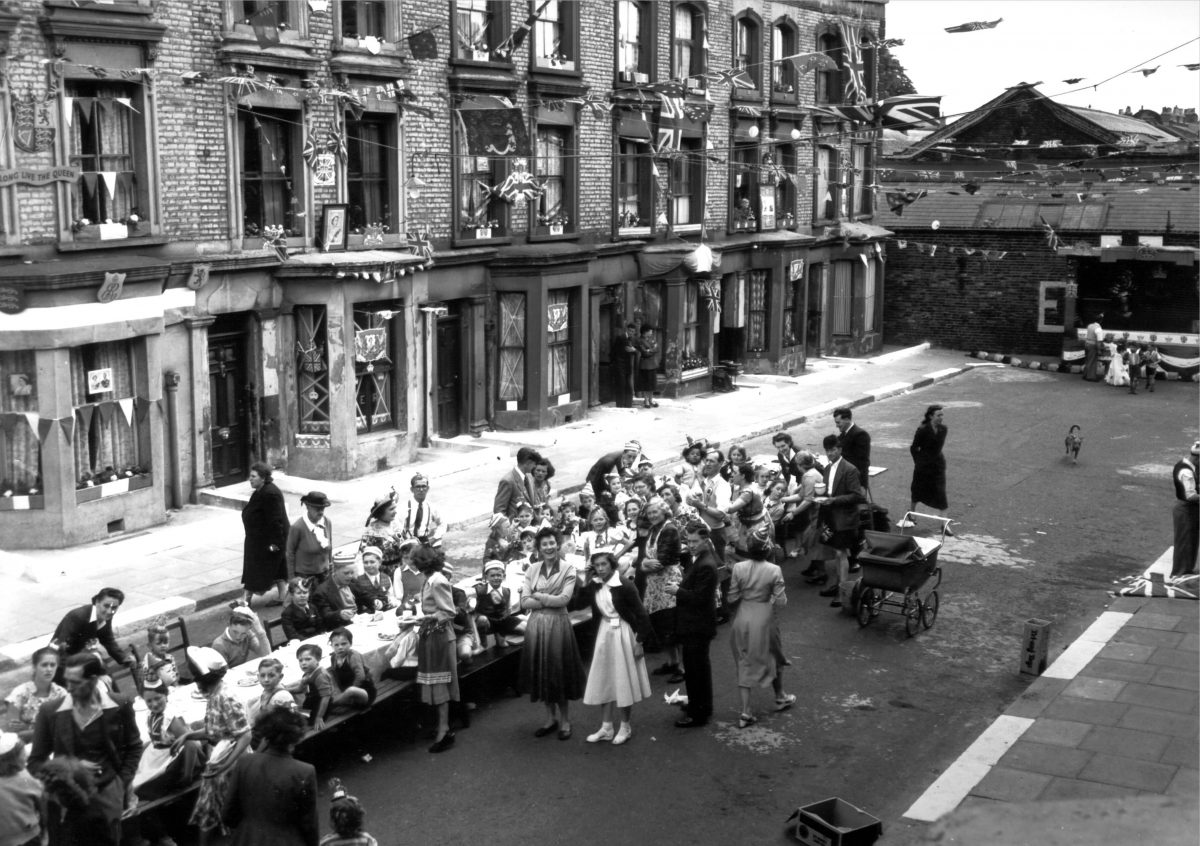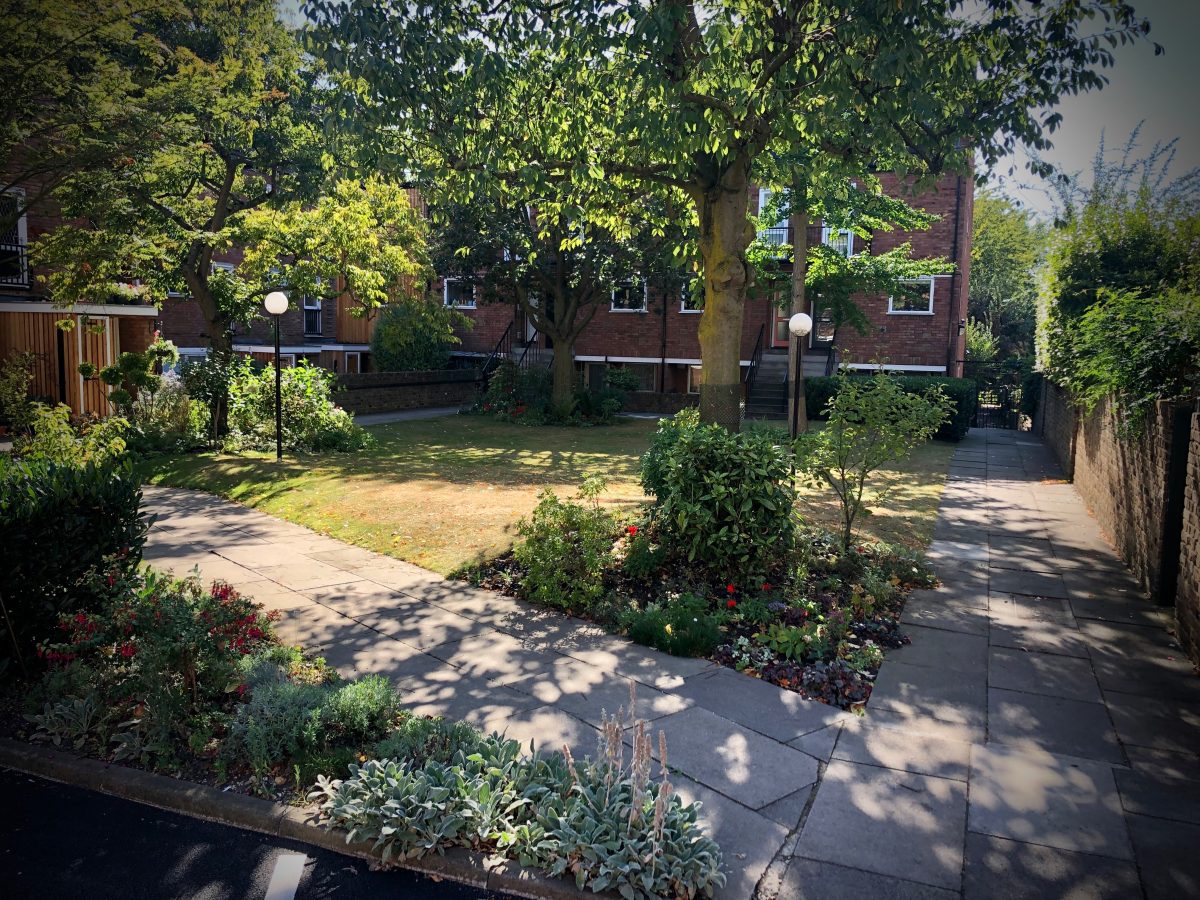In a 1970 episode of the BBC sitcom Steptoe and Son entitled ‘Cuckoo in the Nest’, Harold leaves the family home after the unannounced visit of Albert’s supposedly long-lost Australian son. He moves to a particularly run-down bed-sit in a particularly run-down terrace of houses located in St Stephen’s Gardens in Notting Hill.
A pristine St Stephen’s Gardens, or what’s left of it after some slum clearances demolished much of the local area in 1973–74 to make way for the Wessex Gardens estate, is now a very fashionable part of London. A local rag and bone man these days, if there were any left that is, would hardly be able to afford a bed-sit (now of course called a studio apartment) in the street now. They currently cost around about half a million pounds.
The decaying, run-down and peeling terrace seen in 1970 had once been part of the notorious Peter Rachman property empire. In fact the first house he bought and used for his infamous multi-occupation was probably in St Stephen’s Gardens itself.
It had been the 1963 Profumo Affair which had rather belatedly brought the name Rachman to the British public’s notice. Rachman had actually died the year before but his name, still synonymous today with exploitative and unscrupulous private landlords, was mentioned in court as someone who had kept both Keeler and Rice-Davies as mistresses. The affair with Keeler was short-lived (“sex to Rachman was like cleaning his teeth and I was his toothbrush”) and they ended up hating each other but a sixteen year old Mandy was moved into his Marylebone flat at 1 Bryanston Mews in 1961 and lived there for over a year. She later described the flat:
It was the perfect bachelor-girl apartment, close carpeted soft green with a well-fitted kitchen and luxurious bathroom…there was a huge mirror in the sitting-room which gave a view of the bedroom next door. A two-way mirror, Peter explained, installed by a former tenant, Dennis Hamilton, just like the one he and his ex-wife Diana Dors had had their home in Maidenhead.
Rachman died in November 1962 and Rice-Davies had already moved out of his Bryanston Mews flat when she heard the news. Immediately fainting, her first words when she came round were ‘Did he leave a will?”
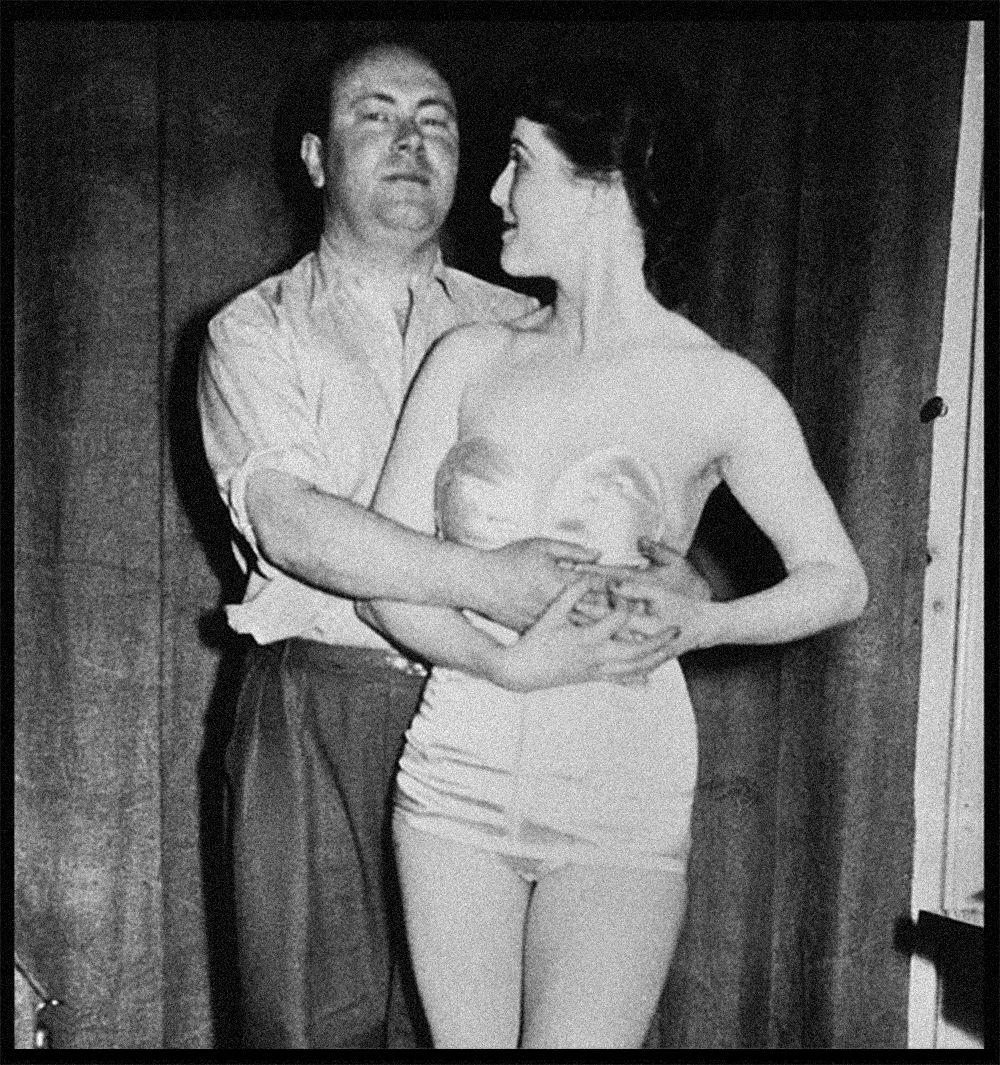
Perec “Peter” Rachman was born in Lwów in Poland (now in western Ukraine) in 1919 to a jewish dentist. Aged 20 he was interned by the Nazis soon after their invasion in September 1939. After escaping to the Soviet Union he was then cruelly treated in Stalin’s Siberian labour camps. He was so hungry at one point he said he was forced to eat human excrement. After Hitler declared war on the Soviet Union in 1941, Rachman fought on behalf of the Allies in the Middle East and Italy. Demobbed in 1948 he became a British resident although, much to his annoyance, he was always refused citizenship. By 1954, initially using a Bayswater Road phone-box as an ‘office’, Rachman built up a portfolio of houses rented through his Express Lettings Agency in Notting Hill. He subdivided large properties into flats and let rooms often for prostitution.
In the mid to late 1950s Rachman found rooms for West Indian immigrants who otherwise were finding it difficult to obtain accommodation. Although he charged extortionate rates for the privilege. Resident and historian of the area Tom Vague in his fascinating book Getting it Straight in Notting Hill Gate tells of how the Sunday newspaper Empire News wrote that Rachman was: ‘probably London’s largest individual landlord for the coloured people… he doesn’t advertise vacant rooms or flats, the coloured people tell each other, “Go see Rachman, man.”’ Rachman’s letting business, and others like it, was helped by a property boom that followed the new Conservative government’s relaxation of Abercrombie’s planning restrictions and their 1957 Rent Act which enabled landlords to ‘de-control’ tenancies and increase rents.
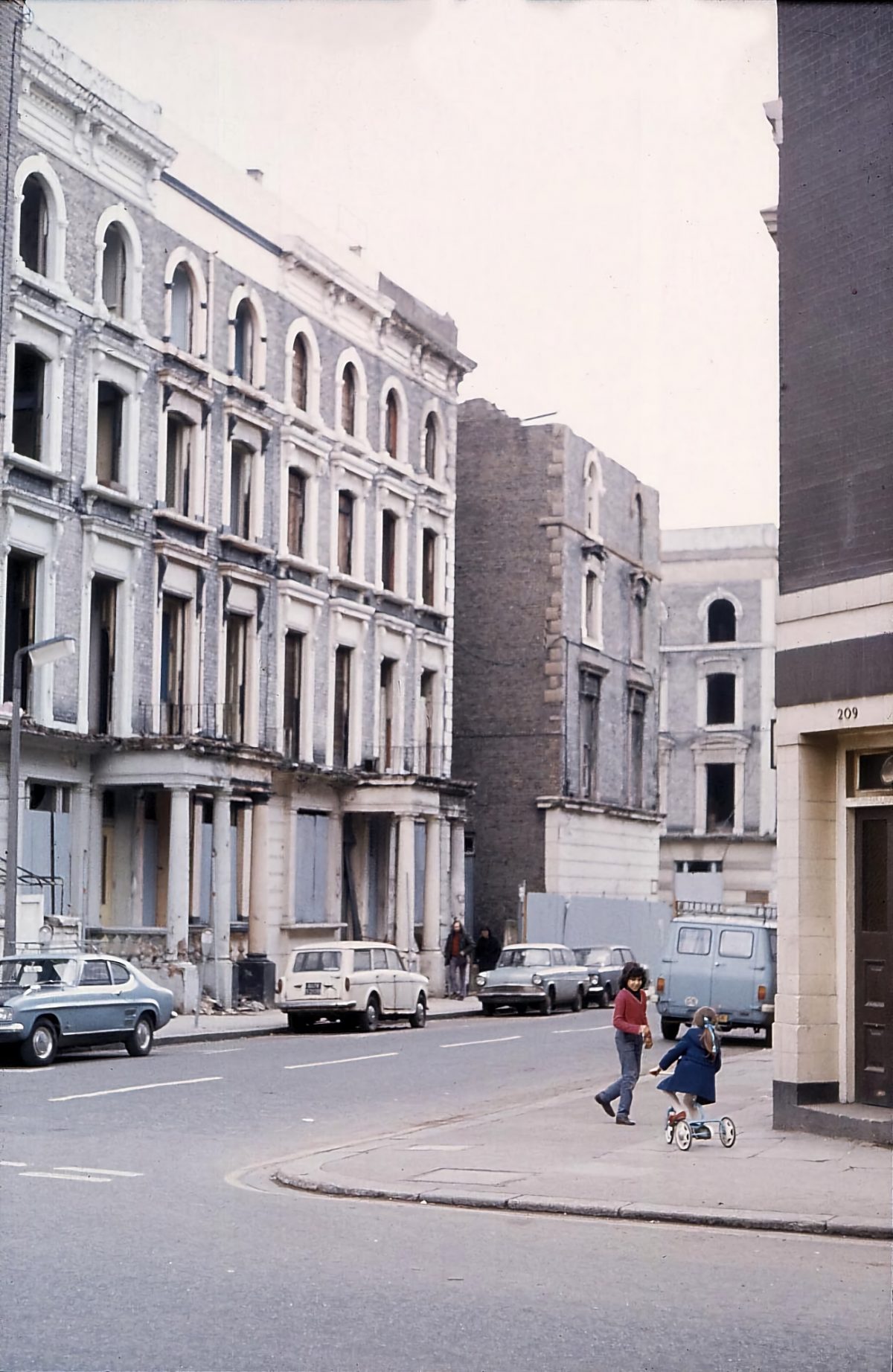
Awaiting demolition in Ledbury Rd, Westbourne Park, Feb 1974 Jonathan Barker
After buying houses in St Stephen’s Gardens Rachman bought into adjacent areas in Notting Hill including Powis Square, Powis Gardens, Powis Terrace, Colville Road and Colville Terrace. You can see Colville Terrace in the film West 11 directed by a 28 year old Michael Winner in 1963, a few months after Rachman’s death. Winner described his skirmish with social realism as a film ‘about misfits in early sixties Notting Hill Gate, then full of seedy bed-sitting rooms’. The producer of the film Danny Angel was adamant he didn’t want too much location work however, ‘We don’t want a lot of wobbly cameras like they have in France. In England we make films in studios’ he said, ’in England we make films in studios’. This was the same producer who rejected Julie Christie, Sean Connery and Oliver Reed for roles in the film because they were ‘nothing more than b-picture artists’.
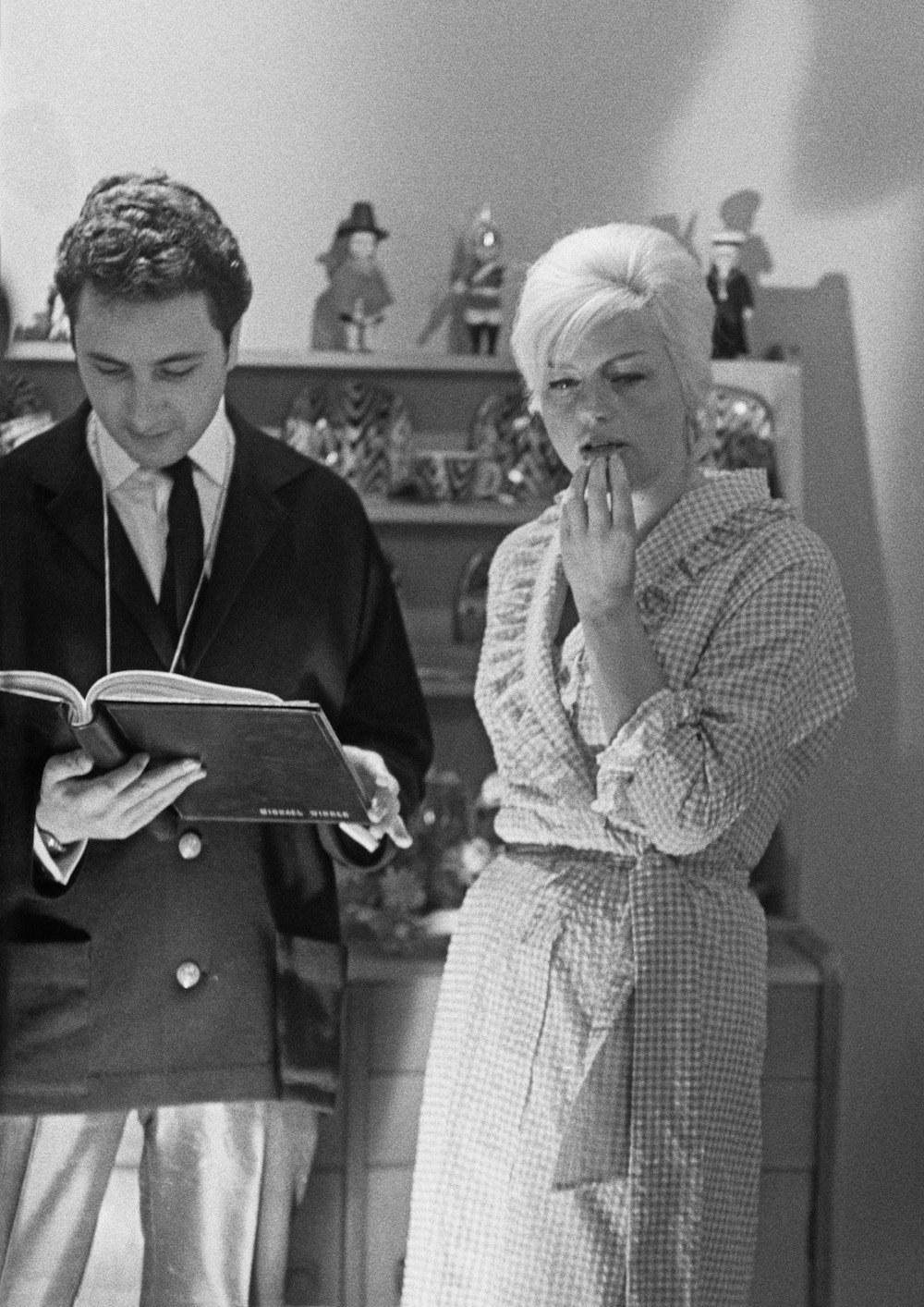
Michael Winner (1935 – 2013) directs English actress Diana Dors (1931 – 1984) in a bedroom scene for the crime drama ‘West 11’, London, 28th January 1963. (Photo by Norman Potter/Daily Express/Hulton Archive/Getty Images)
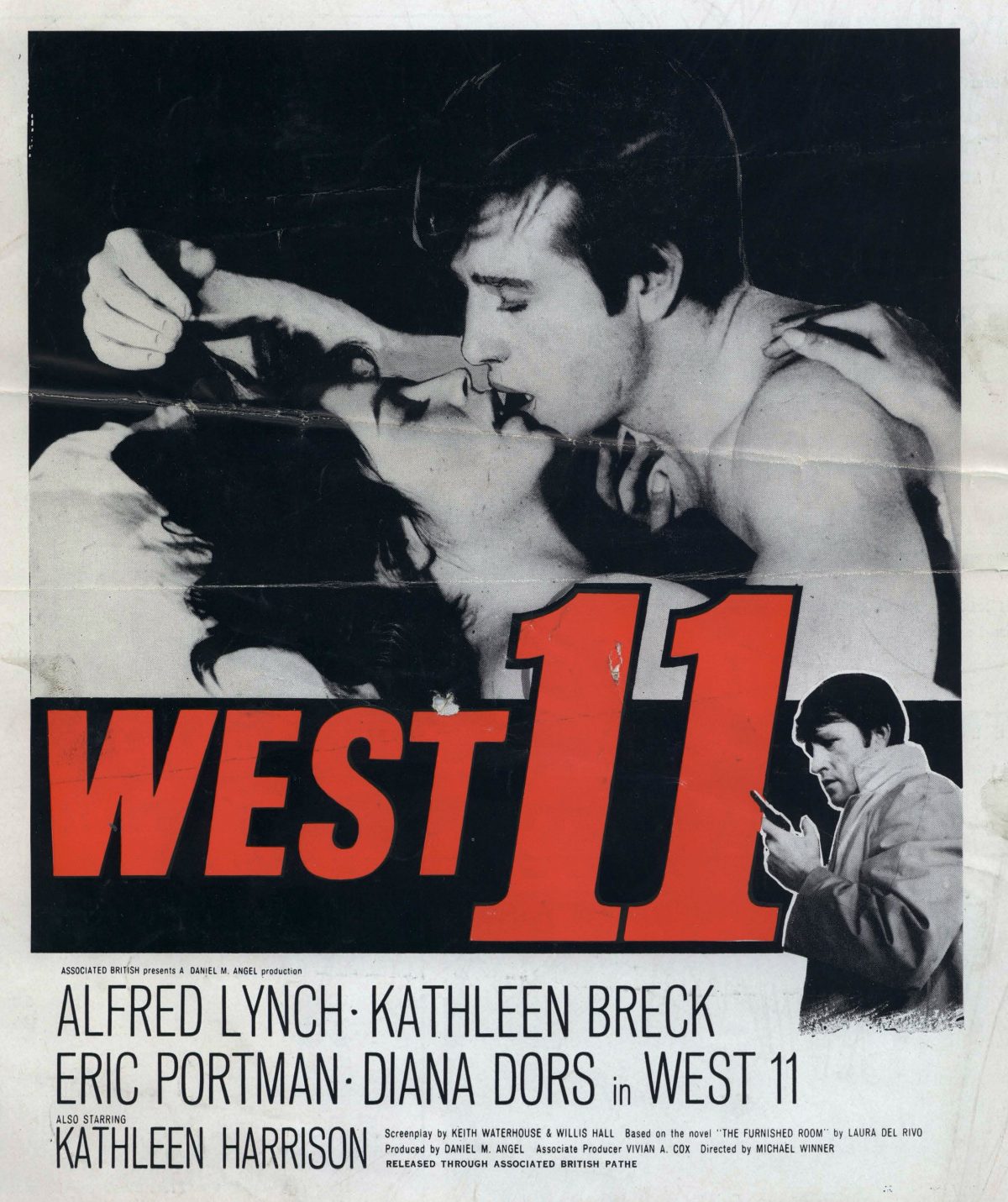
West 11 poster
https://www.youtube.com/watch?v=LQoKk-haeAk
At one point in West 11 we see the movie’s anti-hero Joe Beckett played by Alfred Lynch passing a particularly dilapidated house at number 25 Powis Square. Six years later the same property was used as the exterior location for the Donald Cammell and Nicholas Roeg film Performance.
By 1968 the down-at-heel ambience of the area had attracted a new wave of incomers – hippies – who hung around the Portobello Road market and the nearby ‘head’ shops. In other words it was the perfect bohemian part of London in which Performance’s fictitious rock star Turner lived. The movie, starring Mick Jagger, essentially playing himself, was made in 1968 but only released two years later after the first screening of the film in America couldn’t have gone more badly. One Warner studio executive’s wife literally vomited on her husband’s shoes while another executive could only say – ‘Even the bathwater’s dirty’.

From left to right, Michelle Breton, Anita Pallenberg and Mick Jagger on the set of Donald Cammell and Nicolas Roeg’s psychological thriller ‚ÄúPerformance‚Äù, UK, 1968. (Photo by Andrew MacLear/Getty Images)
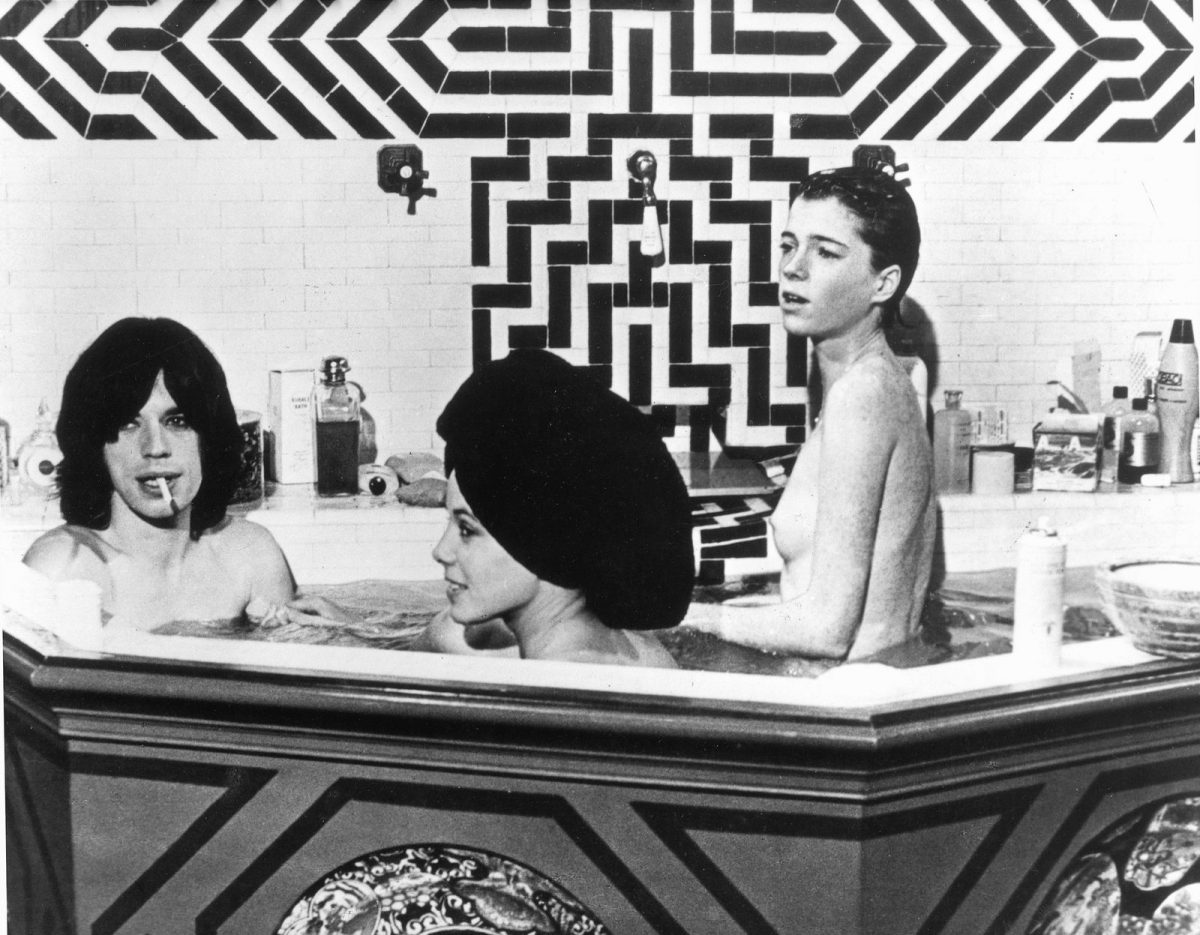
Performance, Jagger, Pallenberg and Breton in the infamous bath scene.
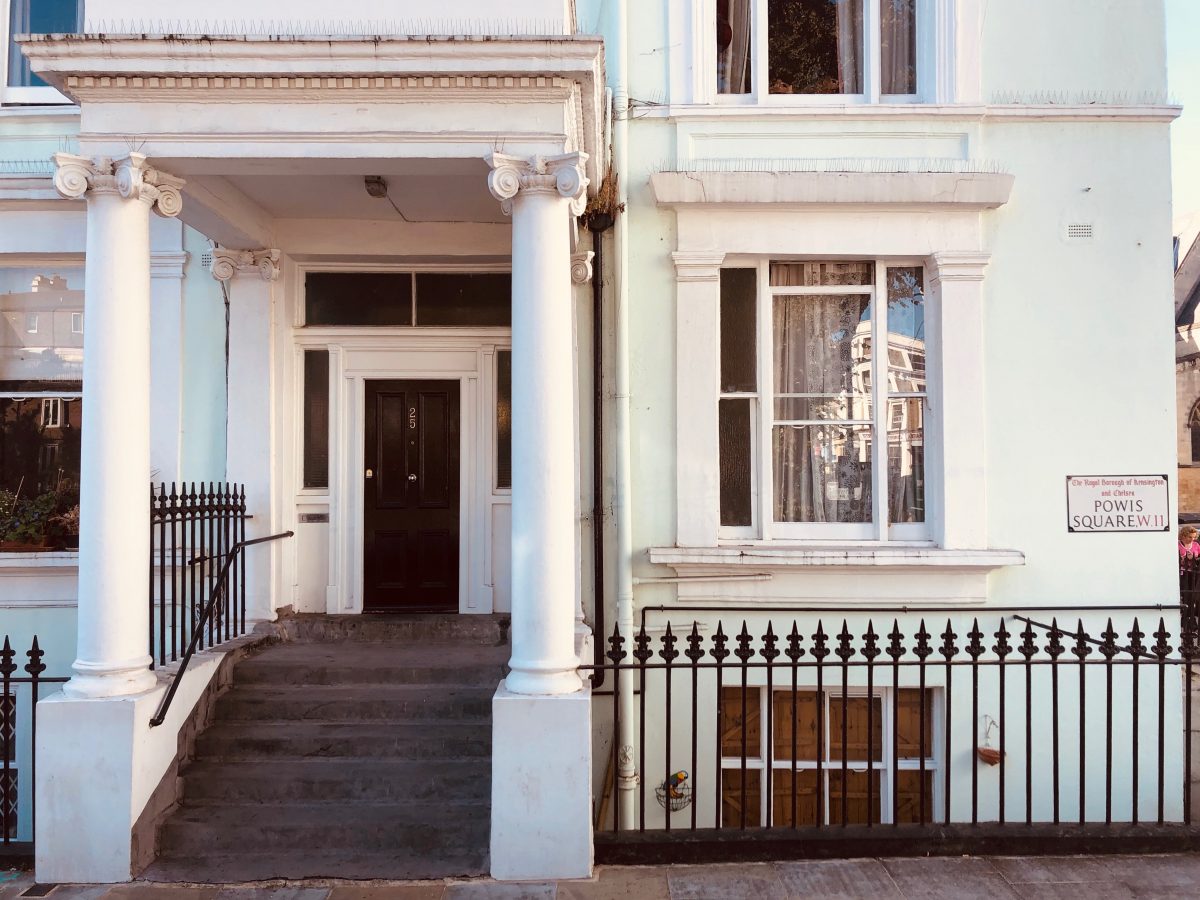
25 Powis Square today, and where Mick Jagger’s Turner lived in Performance, photo by Matt Fisher
https://www.youtube.com/watch?v=mggYe5E5laU

Powis Square, 1978(?), looking from Colville Terrace John Goodman
Performance was probably the first film that portrayed drug-taking that was also made by people who took drugs as a normal lifestyle choice. As the journalist Mick Brown once wrote about the film:
Kick-starting the day with a five-skinner and a bath with two naked girls has never seemed so domestically routine.
A year after Performance was released an even seedier side of Notting Hill featured heavily in Richard Fleischer’s disturbing 10 Rillington Place based on Ludovic Kennedy’s 1961 book of the same name. Kennedy argued that Timothy Evans had been wrongly convicted and hanged in 1950 for the murder of his wife and child that was almost certainly by the hand of John Christie. The infamous address was the site of at least eight of Christie’s murders in the 1940s and 50s – one being that of his own wife. He was hanged just before 9am at Pentonville Prison on 15th July 1953. With his arms already pinioned behind his back and a hood over head Christie complained to the hangman that he had an itchy nose. Albert Pierrepoint, told him not to worry, ‘it won’t bother you for long’. Christie’s house was quickly re-let although the street that had housed a serial killer had the name quickly changed to Ruston Close.
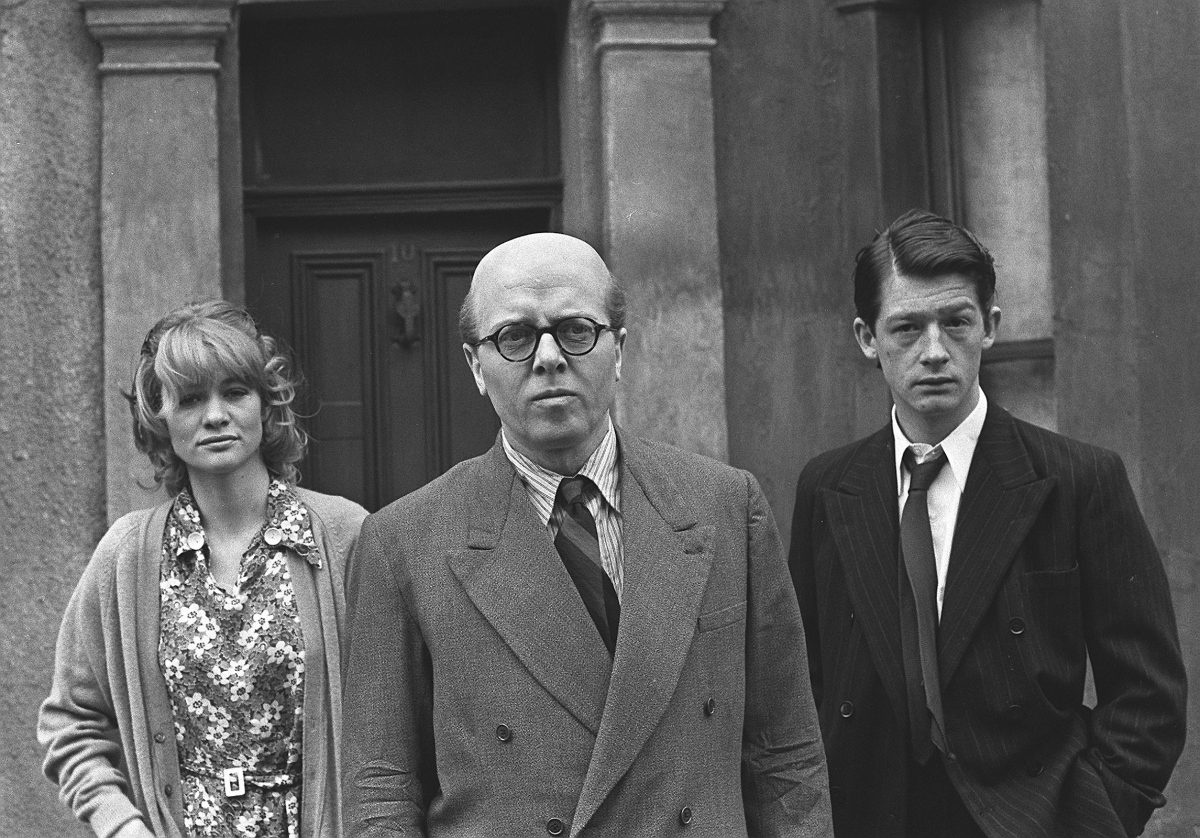
Richard Attenborough, centre, plays mass-murderer John Reginald Christie, in the lead role of “10 Rillington Place”, in London, England, May 17, 1970. John Hurt, right, plays Timothy John Evans and Judy Geeson plays his wife Beryl Evans. (AP Photo/Staff/Dear).
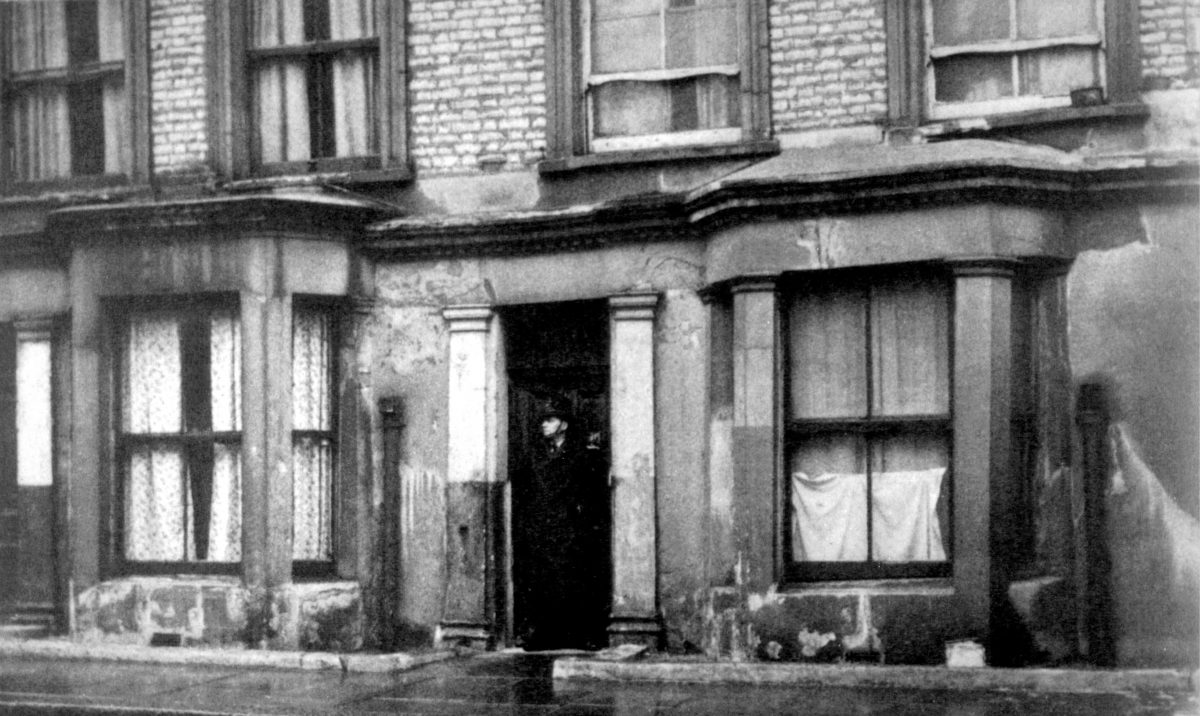
Crime – Murder – 10 Rillington Place – the dismal house in which Christie and Evans lived.
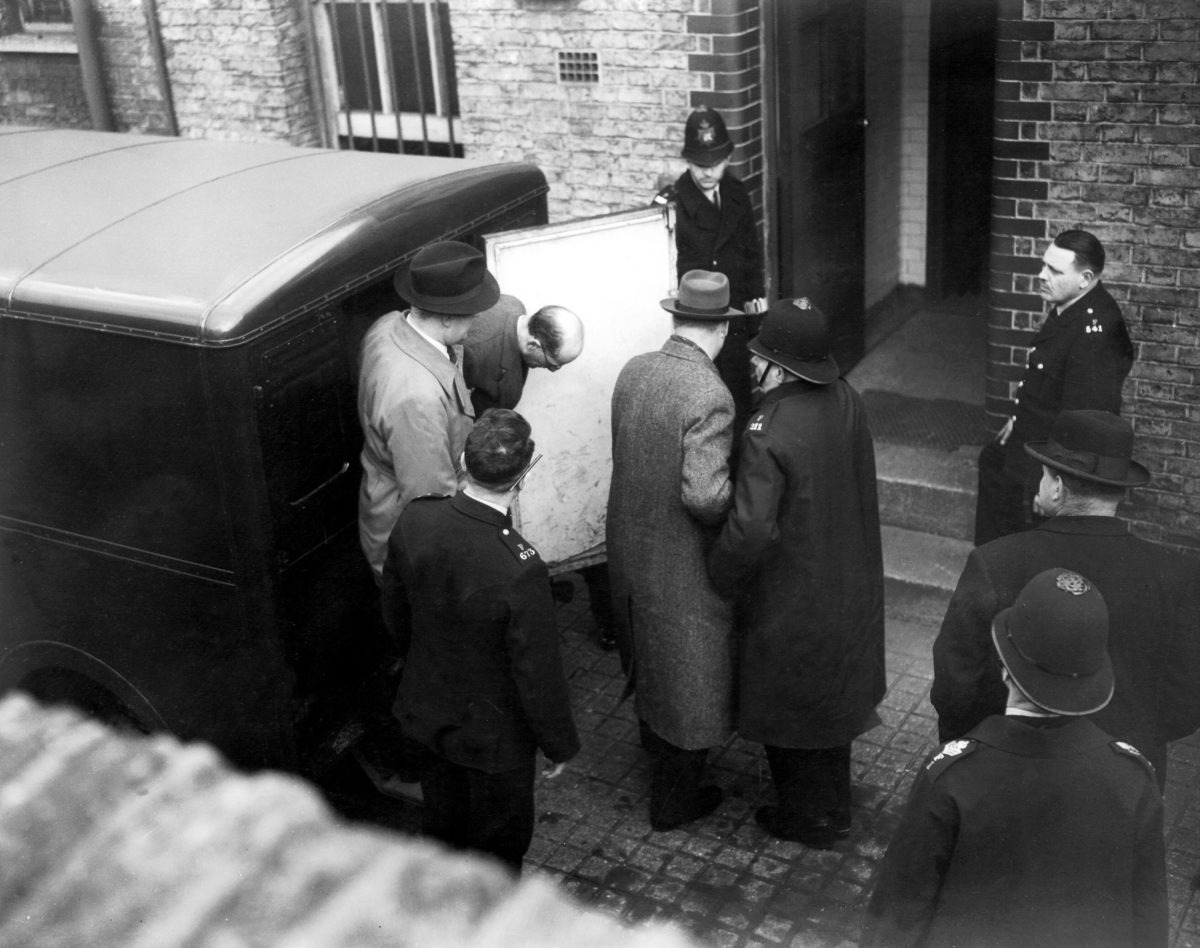
John Reginald Halliday Christie, who was yesterday charged with the murder of his wife, Ethel Christie, was brought before the West London stipendiary magistrate this morning. The murder, which is alleged to have taken place “on or about 14 December 1952”, was discovered when police found the remains of at least six women concealed in the house and garden of No 10 Rillington Place, Notting Hill. Photo Shows: John Reginald Halliday Christie photographed as he was escorted to West London stipendiary magistrates this morning. !st April 1953
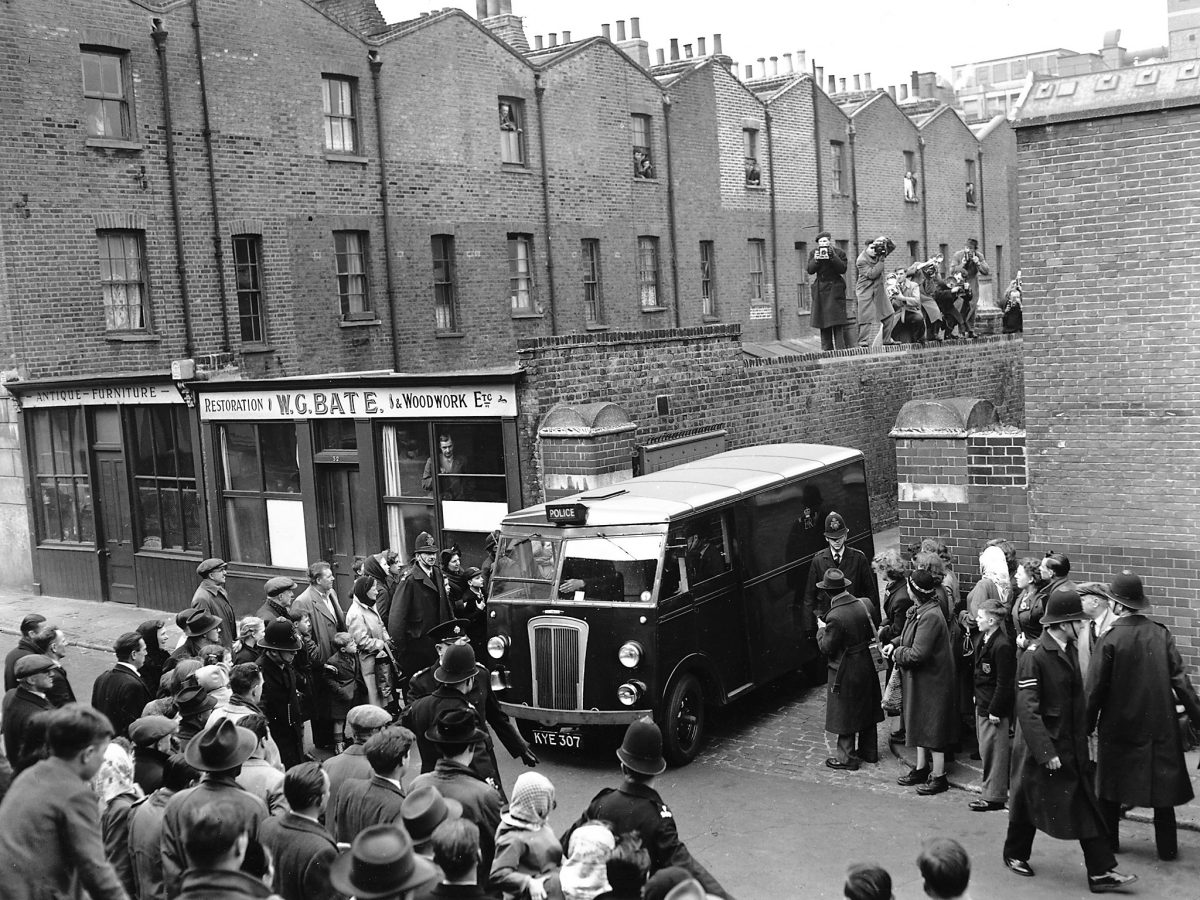
John Christie leaving court in a police van after the trial accusing him of his wife’s murder at 10 Rillington Place.
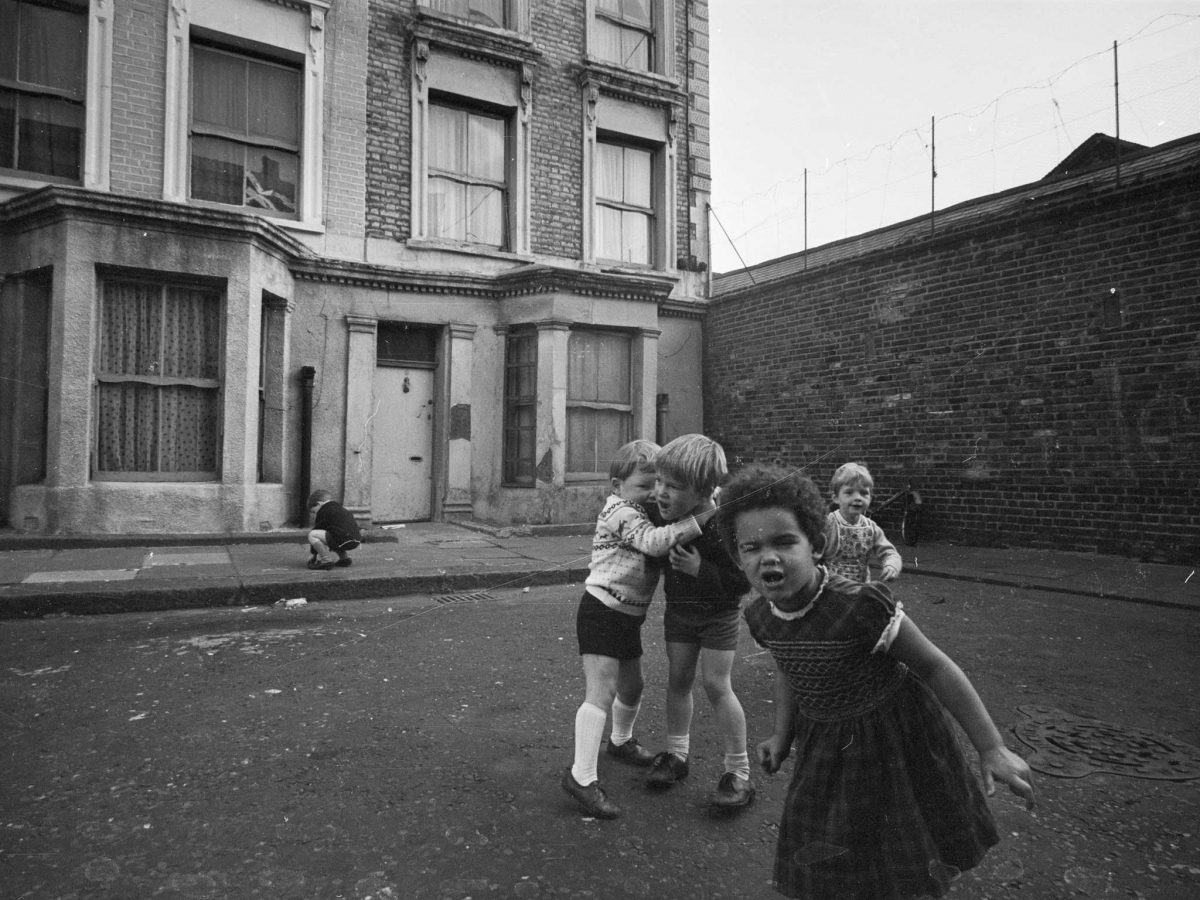
12th October 1966: Children playing outside 10 Rillington Place, London, the home of the mass murderer, John Christie. (Photo by Terry Fincher/Express/Getty Images)
Interior scenes for the movie that starred Richard Attenborough, Judy Geeson and John Hurt were shot in a house just a few doors down (the three families at number ten refused to move out for the filming) but also at Lee International studios, just the other side of a nearly completed Westway on Kensal Road. The A40 (M) as the road is properly called was designed to take away the horrendous congestion caused by the lack of a link between central London and Western Avenue built between the wars. Michael Heseltine, Parliamentary Secretary to the Minister of Transport opened the road on 28 July 1970. While he was trying to cut a white ribbon that would mark the opening of, at the time, the longest elevated motorway in Britain he couldn’t have failed to see along the top of a terrace of houses adjacent to the new road a huge banner that read – ‘Get Us Out of this Hell, Re-house Us Now’. Heseltine was heard to repeatedly apologise and tried to out-yell the raucous residents: “We want to help you, we will help you!”. No one really did though. The Borough of Kensington and Chelsea blamed the Greater London Council while the GLC just held up their hands and said it wasn’t their responsibility either. Whosever fault it was not many seemed to care about the local working class residents who either had been uprooted or forced to live by a snarling polluting motorway.

While 10 Rillington Place was being filmed the actual residents of Ruston Close were forced to move out in preparation for even more redevelopment of the surrounding area. The site where Christie’s old house stood is a now a gap in the houses on St Andrews Square next to Bartle Road,
In 1946 before anything was known of John Christie’s exploits George Orwell wrote his essay Decline of the English Murder bemoaning that lurid crime reporting had passed its peak. What he would have thought of the Christie murders we do not know. Orwell died from the complications of tuberculosis exactly a week after Timothy Evans was mistakenly found guilty for murdering his wife and child in January 1950. Evans’s trial had received little publicity or controversy despite the horrific nature of the murders and it was certainly anything but front-page news.
Just before he died Orwell was told that Nineteen Eight-Four had been bought by the Book-of-the-Month-Club in the US with a deal that was to earn him around £40,000. Orwell, however, was dead before he received a penny. Two months later Evans, who according to Mr Justice Lewis had ‘lied and lied and lied’ was hanged at Pentonville Prison by Albert Pierrepoint on 9th March 1950. John “Reg” Christie had been the main prosecuting witness in Evans’s trial and had sat impassively at the back of the court when the guilty verdict was announced. The last words that Evans was purported to have said to both his mother and sister were: ‘Christie done it’.
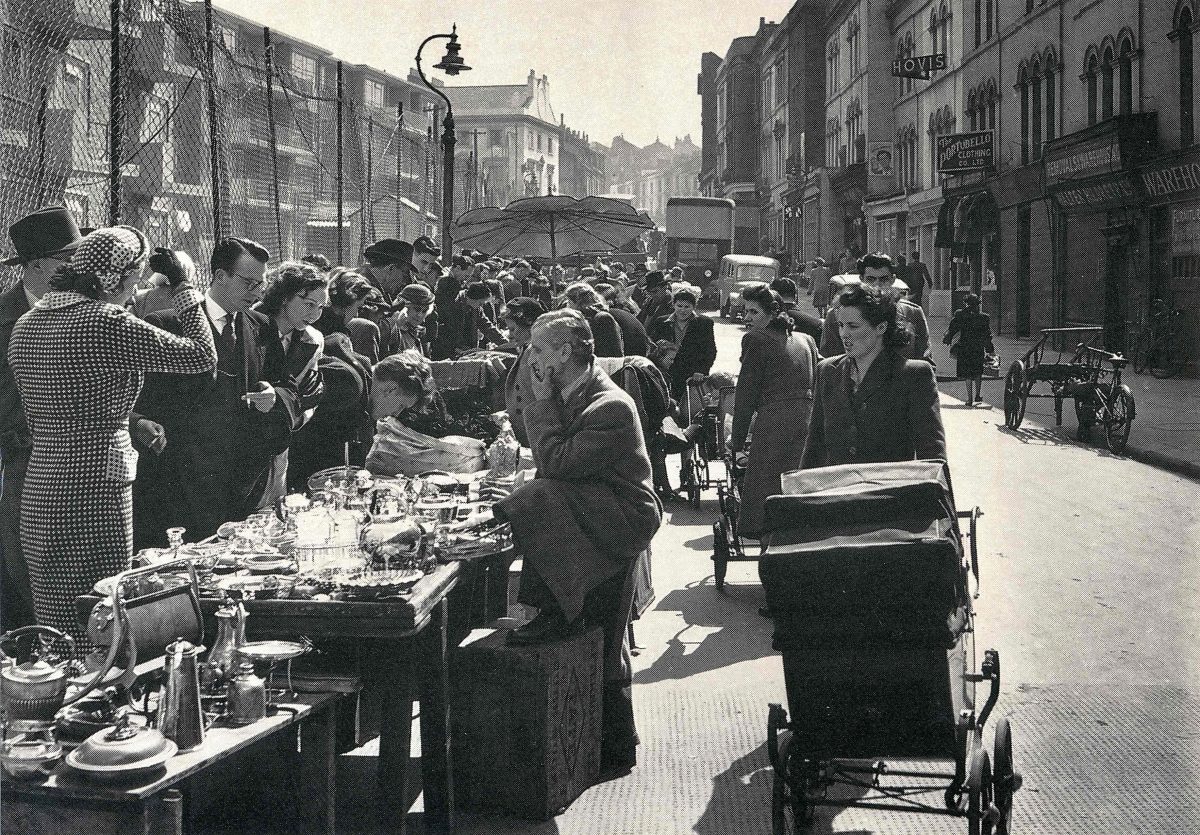
Portobello Road Market. London. c 1950
Orwell had actually lived in Notting Hill for a short while. In 1927, after the Old Etonian had spent five years in Burma as a military policeman, he moved into a room next door to a friend’s pottery shed at 22 Portobello Road (then number 10). His room was so cold he had to use candles to warm his hands enough to write. In an article in Tribune magazine in 1944 he described Portobello Road as “hardly the fashionable quarter”.
It was from this room that the pre-Orwell Eric Blair dressed up as a vagrant and went “down and out” in the east end of London and Paris. Notting Hill has always been an area where the rich and poor have had to rub together but the contrast between them nowadays seems more extreme than ever. The Grenfell Tower fire of 2017 just a stone’s throw from houses worth millions, grimly underlined this.
There are still hippies in Notting Hill, but more of the trustafarian type these days and fifty years after Jagger’s Turner made his home in Powis Square there are plenty of local rock stars. Still a Notting Hill resident, Damon Albarn once lived in St Stephen’s Gardens presumably in a more salubrious style than Harold Steptoe. In 2006 Lily Allen, who also once lived in Notting Hill, held the launch party of her first album ‘Alright, Still’ at a strange gypsy/traveller/stables encampment on Latimer Road just underneath the Westway. Locals refer to it as ‘Strummerville’. It was here forty years previously in 1966 that the GLC rehoused a group of thirty Totters and their horses when their former home in Hammersmith was being redeveloped. They included Arthur Arnold, the real and original ‘Albert Steptoe’ and ‘Hercules’ which was the actual horse that featured in the series Steptoe and Son.

Would you like to support Flashbak?
Please consider making a donation to our site. We don't want to rely on ads to bring you the best of visual culture. You can also support us by signing up to our Mailing List. And you can also follow us on Facebook, Instagram and Twitter. For great art and culture delivered to your door, visit our shop.
